Birds in Zambales, Philippines are abundant and varied. From the mighty Philippine Eagles soaring high in the sky to the tiny bee-eaters flitting around the banks of rivers, Zambales is an ornithologist’s paradise.
With an incredibly diverse range of species, bird lovers will be spoilt for choice in this province. From the wild beauty of the mountains to the lush forests and even the coastal regions, there’s something for everyone in Zambales.
1. White-Eared Brown Dove
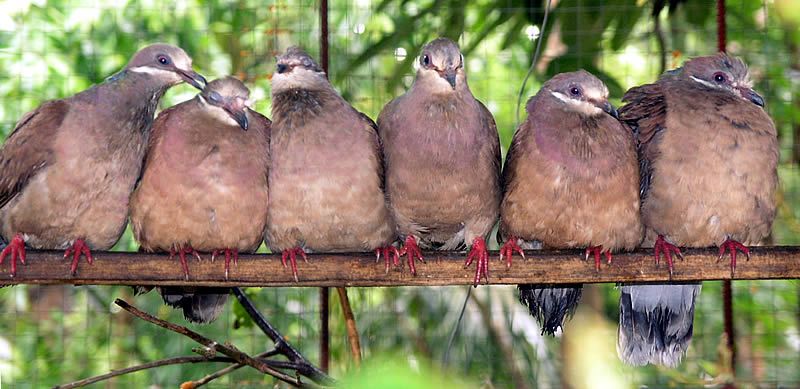
The white-eared brown dove is a beautiful species of bird that belongs to the Columbidae family. It is found only in the Philippines, meaning it is endemic to the country and is not found anywhere else in the world.
Its feathers are a deep brown color, and it has distinctive white feathers on the sides of its head. It is typically found among lowland forests and mangroves, and it feeds mainly on fruits and seeds.
The bird is known for its loud and melodic cooing, which it uses to communicate with other birds. It is a relatively small bird, measuring about 20 centimeters in length and weighing around 80 grams.
Due to its limited range, the white-eared brown dove is classified as an endangered species and is facing a very high risk of extinction. To help protect this bird, conservation efforts are being made to preserve its habitat and ensure that its population can remain stable.
| Kingdom | Animalia |
| Phylum | Chordata |
| Class | Aves |
| Order | Columbiformes |
| Family | Columbidae |
| Genus | Phapitreron |
| Species | P. leucotis |
2. Plain Bush-Hen
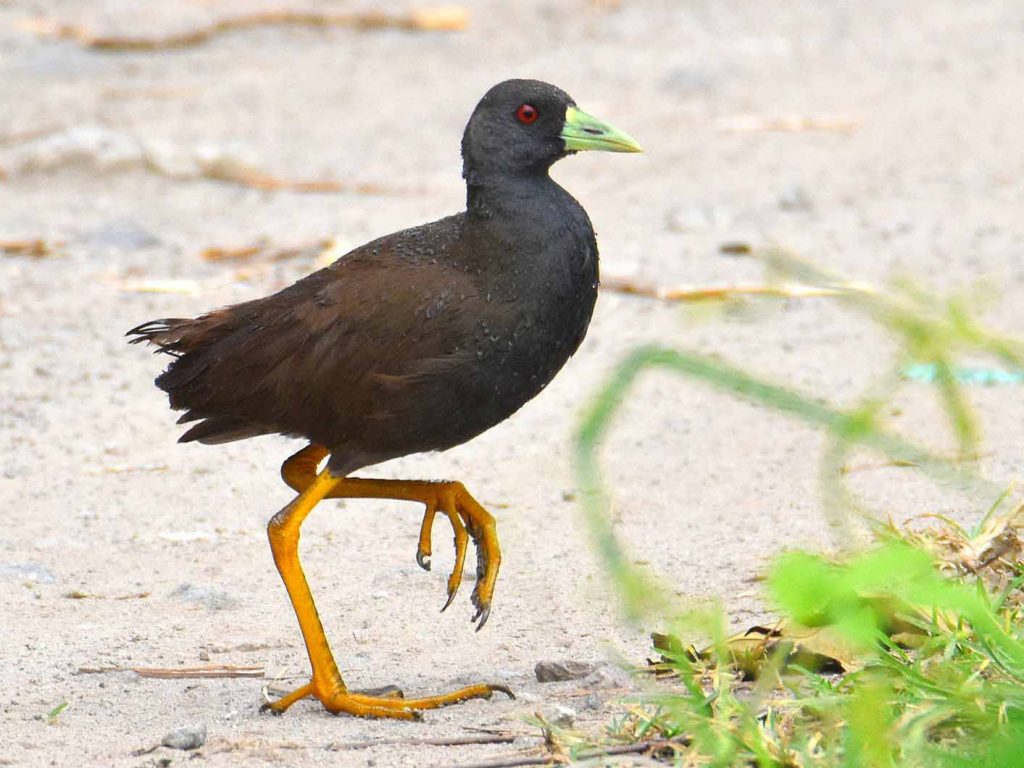
Source: ebird.org
The plain bush-hen is a type of bird that belongs to the Rallidae family. It is a species of bird that can only be found in the Philippines. This species of bird is quite small, with a length of about 25 cm and a wingspan of around 35 cm.
Its plumage is a mottled brown, with a white belly and a dark brown head. It is an omnivorous bird, which means that it feeds on a variety of foods such as insects, fruits, seeds, and even small vertebrates.
The bush-hen is quite shy and is usually found in areas with dense cover such as thickets, forests, and grasslands. It nests on the ground and usually lays two eggs at a time.
The plain bush-hen is an important part of the Philippines’ avian diversity and plays a key role in maintaining the natural balance of the ecosystem.
| Kingdom | Animalia |
| Phylum | Chordata |
| Class | Aves |
| Order | Gruiformes |
| Family | Rallidae |
| Genus | Amaurornis |
| Species | A. olivacea |
3. Philippine Frogmouth
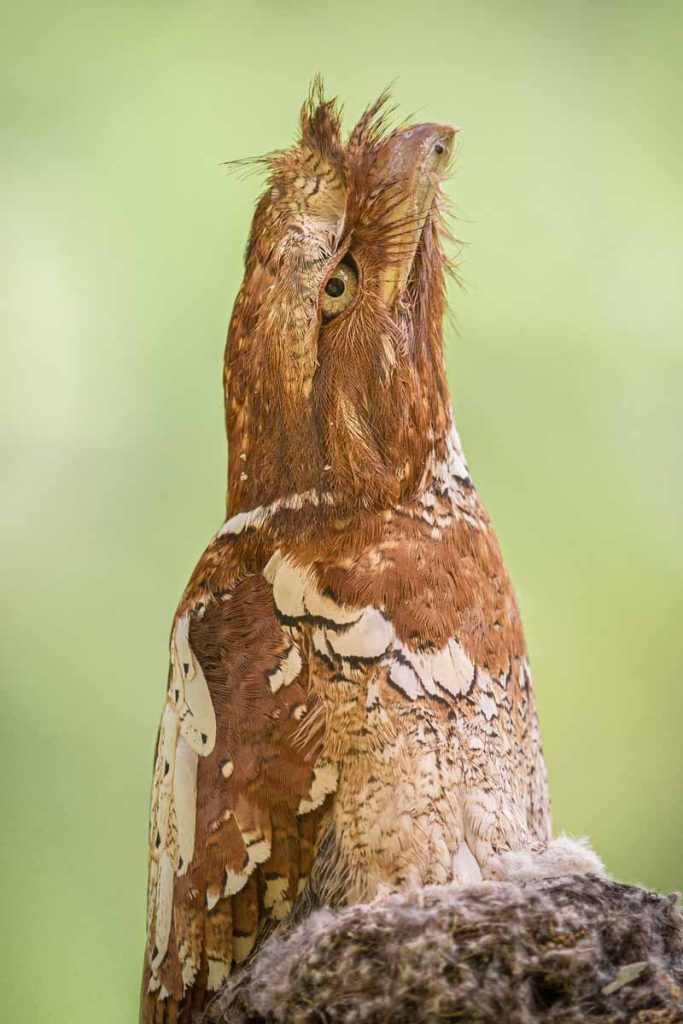
Source: Wikipedia
The Philippine frogmouth is a nocturnal bird that can be found in many areas of the Philippine archipelago, including lowland forests and maturing second growth. This bird is quite mysterious, with little information available about it.
However, it is thought that the Philippine frogmouth feeds mainly on grasshoppers, cicadas, crickets, and beetles. Its diet is mainly made up of insects, which may explain why it is so well adapted to living in areas with abundant insect populations.
The Philippine frogmouth has adapted to living in a wide variety of habitats, from lowland forests to maturing second growth, which is a testament to its adaptability and resilience.
The Philippine frogmouth is an important part of the ecosystem and plays a vital role in maintaining healthy insect populations throughout the archipelago.
| Kingdom | Animalia |
| Phylum | Chordata |
| Class | Aves |
| Clade | Strisores |
| Order | Podargiformes |
| Family | Podargidae |
| Genus | Batrachostomus |
| Species | B. septimus |
4. Pygmy Swiftlet
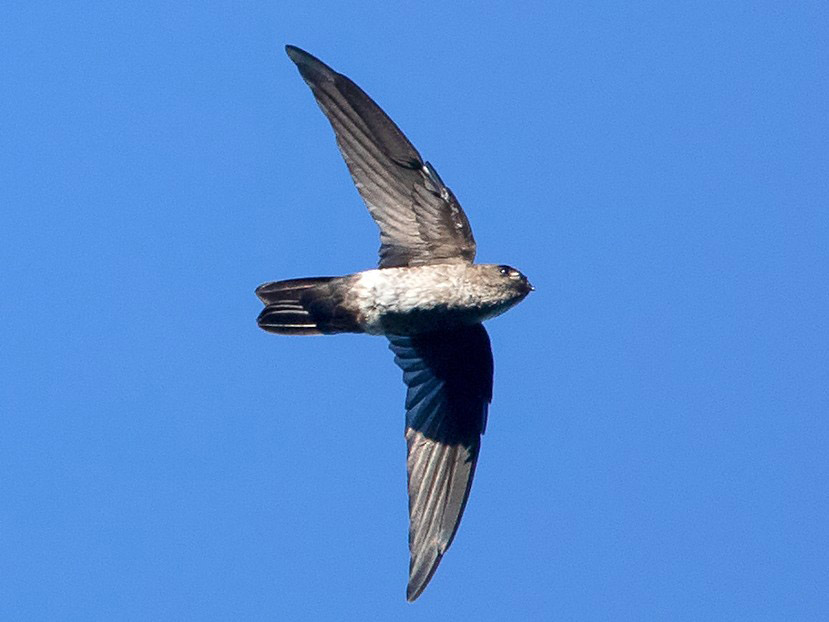
Source: ebird.org
The Pygmy Swiftlet is a species of swift bird that is found solely in the Philippines. It is a part of the Apodidae family which includes all types of swifts and hummingbirds.
The Pygmy Swiftlet is a small bird, measuring only 9 cm in length, making it the smallest swift species in the world. Additionally, its weight is only 5 grams.
The natural habitat for the Pygmy Swiftlet is the subtropical or tropical moist lowland forests found in the Philippines. This means that these forests are mostly wet and humid throughout the year and this type of climate supports the species.
The Pygmy Swiftlet’s diet consists of flying insects, such as flies and beetles, which are present in the areas of its habitat. Overall, the Pygmy Swiftlet is an amazing species of bird that is only found in the Philippines.
It is incredibly small, measuring only 9 cm in length and weighing 5 grams. The Pygmy Swiftlet’s natural habitat is the subtropical or tropical moist lowland forests found in the Philippines, which provides the bird with the food it needs.
| Kingdom | Animalia |
| Phylum | Chordata |
| Class | Aves |
| Clade | Strisores |
| Order | Apodiformes |
| Family | Apodidae |
| Genus | Collocalia |
| Species | C. troglodytes |
5. Pink-Bellied Imperial Pigeon
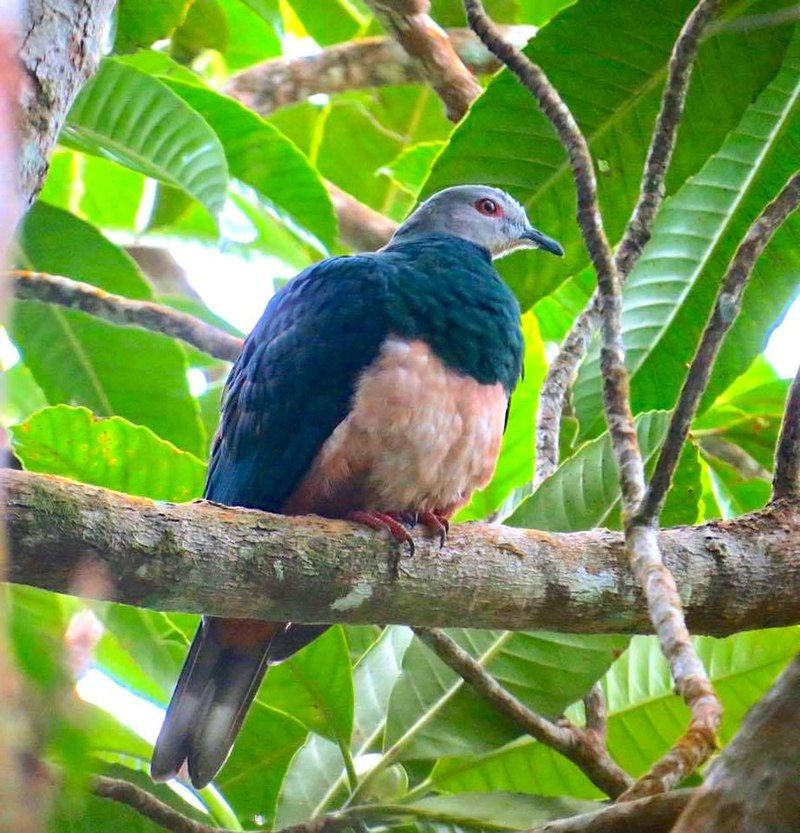
The pink-bellied imperial pigeon, also known as the zone-tailed pigeon, is a species of bird native to the Philippines. It is a large fruit-eating bird, with an average length of up to 42cm.
The pigeon is identifiable by its primarily pinkish-brown plumage, with a darker head and tail.
The wings are predominantly black, with a white band running across them, and the feet are pinkish-gray. The diet of the pink-bellied imperial pigeon consists mainly of fruits, such as figs and bananas, as well as some nuts.
It has also been known to eat seeds, berries and flower buds. The bird is usually found in flocks, and it forages in both lowland and mountain forests.
It is also a migratory species, which means it moves from place to place seasonally in order to find food sources. The pink-bellied imperial pigeon has an important role in the Philippines’ ecology, as it helps to disperse the seeds of local plants, thus aiding in the growth of new forests.
The species is currently listed as vulnerable on the IUCN Red List, due to deforestation and hunting in its natural habitat. Conservation efforts are being made to protect the species and its habitat, in order to help keep the population from further decline.
| Kingdom | Animalia |
| Phylum | Chordata |
| Class | Aves |
| Order | Columbiformes |
| Family | Columbidae |
| Genus | Ducula |
| Species | D. poliocephala |
6. Black-Winged Stilt
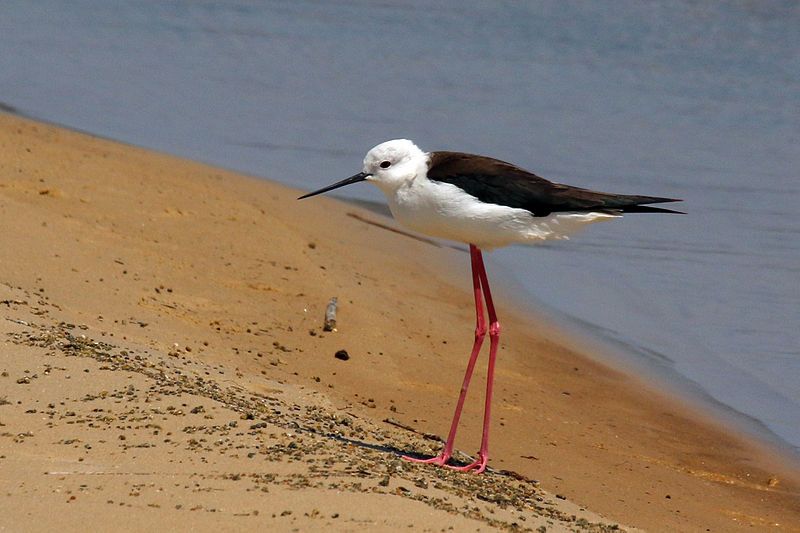
The black-winged stilt is a species of wader bird found in many parts of the world. Waders are birds that frequent wetland habitats and the black-winged stilt is no exception. It is a member of the avocet and stilt family and is known for its extremely long legs.
This species is known by its scientific name, H. himantopus, and is usually referred to as a single species that is found in almost all parts of the world. The black-winged stilt is a fairly large bird, with a wingspan of about 75 cm and a length of around 40 cm.
It has a long, slender body and a thin, pointed bill. The head and upper parts are black, while the underparts are white. The legs are usually a reddish-yellow color, and the feet are webbed. The black-winged stilt is an omnivore, feeding on insects, aquatic animals, and seeds.
It breeds near freshwater areas, and its nest is usually situated close to the water. The female usually lays three to four eggs, which are incubated by both parents.
The black-winged stilt is a common sight in many parts of the world and is considered to be of least concern in terms of conservation.
| Kingdom | Animalia |
| Phylum | Chordata |
| Class | Aves |
| Order | Charadriiformes |
| Family | Recurvirostridae |
| Genus | Himantopus |
| Species | H. himantopus |
7. Green Imperial Pigeon
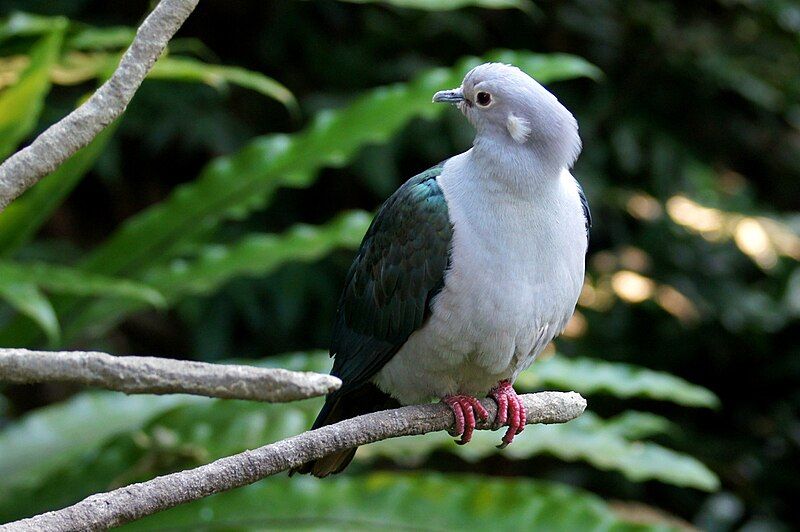
The green imperial pigeon is a species of forest-dwelling bird found across a large range of countries in South and Southeast Asia. It is found in Nepal, India, Sri Lanka, China, Indonesia, and the Philippines.
This species of pigeon is considered to be quite large and is unique in its coloration. It is a deep green color, except for a patch of yellow feathers on its neck.
The green imperial pigeon prefers to live in the forest and generally prefers to live in moist forests near mountains or other bodies of water. It tends to flock together and is often seen in large groups near waterholes, feeding on fruit and berries.
This species of bird is quite adaptable and can be found from sea level up to an elevation of 2,500 meters. The green imperial pigeon is an important species in its range, as it serves as a food source for many species of mammals and bird.
It is also important to the local people in its range, as many of them hunt the bird for food. Despite this, the green imperial pigeon is still common in its range, and its population is not considered to be threatened.
| Kingdom | Animalia |
| Phylum | Chordata |
| Class | Aves |
| Order | Columbiformes |
| Family | Columbidae |
| Genus | Ducula |
| Species | D. aenea |
8. Zebra Dove
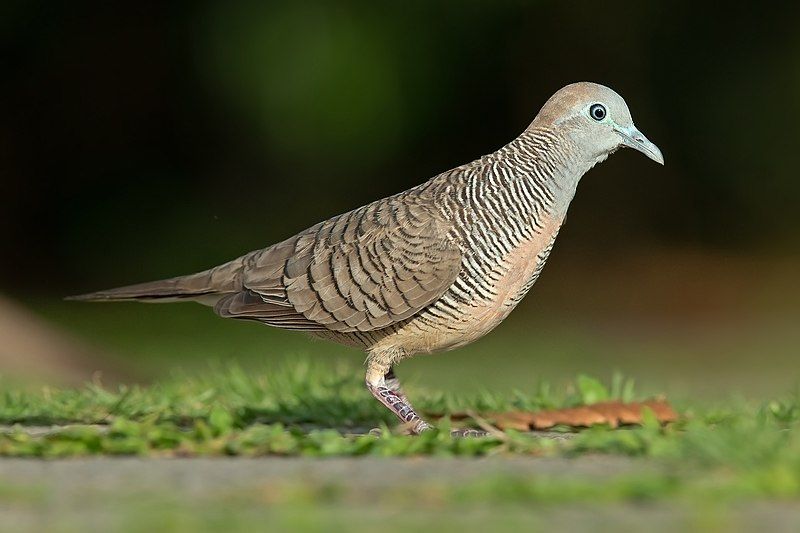
The zebra dove is a species of bird belonging to the dove family, Columbidae. It is native to Southeast Asia and is easily recognizable by its small size and long tail.
It has a predominantly brownish-grey coloration, with black-and-white barring across its wings, back, and tail.
This gives it the alternative name of barred ground dove or barred dove, in reference to its distinct pattern. The zebra dove is found mainly in Southeast Asia, including countries like Thailand, Laos, Vietnam, and the Philippines.
It prefers to inhabit lowland forests and scrub, as well as more open areas like grassland, gardens, and agricultural land.
They are typically found in small flocks of around 10-20 birds and feed mainly on grains, seeds, and insects. In terms of behavior, the zebra dove is known to be quite social and gregarious.
They are also known to be quite vocal, making loud, persistent cooing noises throughout the day. They are monogamous and nest in trees, shrubs, or on the ground.
The female lays two white eggs in a well-constructed nest, and both parents share the responsibility of raising the chicks. Overall, the zebra dove is a unique and fascinating species of bird, easily recognizable due to its distinct black-and-white pattern.
It is found mainly in Southeast Asia, where it can be seen in small flocks in various habitats. Its beautiful vocalizations and social behavior make it an enjoyable species to observe and appreciate.
| Kingdom | Animalia |
| Phylum | Chordata |
| Class | Aves |
| Order | Columbiformes |
| Family | Columbidae |
| Genus | Geopelia |
| Species | G. striata |
9. Pink-Necked Green Pigeon
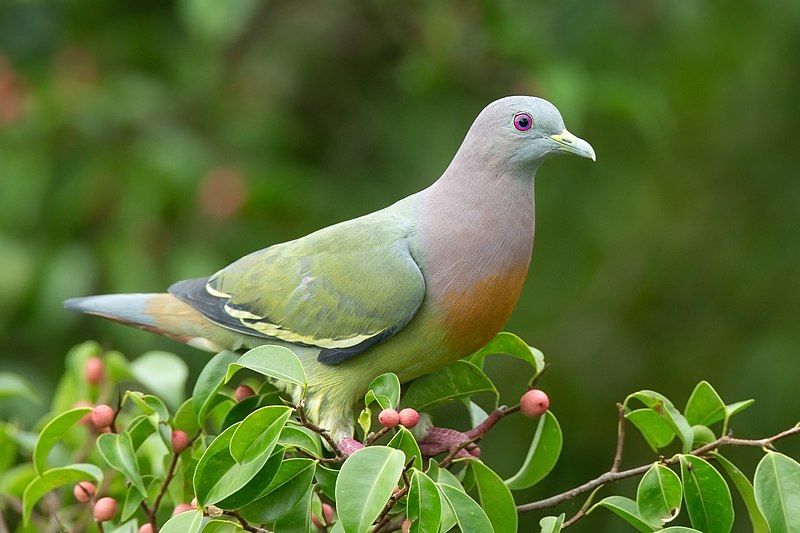
The pink-necked green pigeon is a species of bird that is part of the Columbidae family, which is comprised of both pigeons and doves. It is native to Southeast Asia and is found in many different countries in the region.
This species can be seen in Myanmar and Vietnam, and can also be found in the major islands of Indonesia and the Philippines. It is a common species in this part of the world. The pink-necked green pigeon is a medium-sized bird, ranging in size from 28-34 cm in length.
It has a slim body and a long tail which can measure up to 12 cm in length. The wings are broad and the beak is strong and large. It has bright green feathers with pink or purplish-red feathers on the neck.
The legs and feet of the bird are also pink in color. The pink-necked green pigeon is a social bird and generally lives in flocks of up to 30 individuals. It feeds mainly on fruits and berries, although it will also eat insects and other small animals.
It builds its nest in trees and is a monogamous species, which means that it forms a lifelong pair bond with its mate. The pink-necked green pigeon is an important species in Southeast Asia, as it plays a vital role in the dispersal of seeds and the pollination of plants.
It is also seen as a symbol of peace and tranquility and is a popular bird to watch and admire.
| Kingdom | Animalia |
| Phylum | Chordata |
| Class | Aves |
| Order | Columbiformes |
| Family | Columbidae |
| Genus | Treron |
| Species | T. vernans |
10. Rufous Coucal
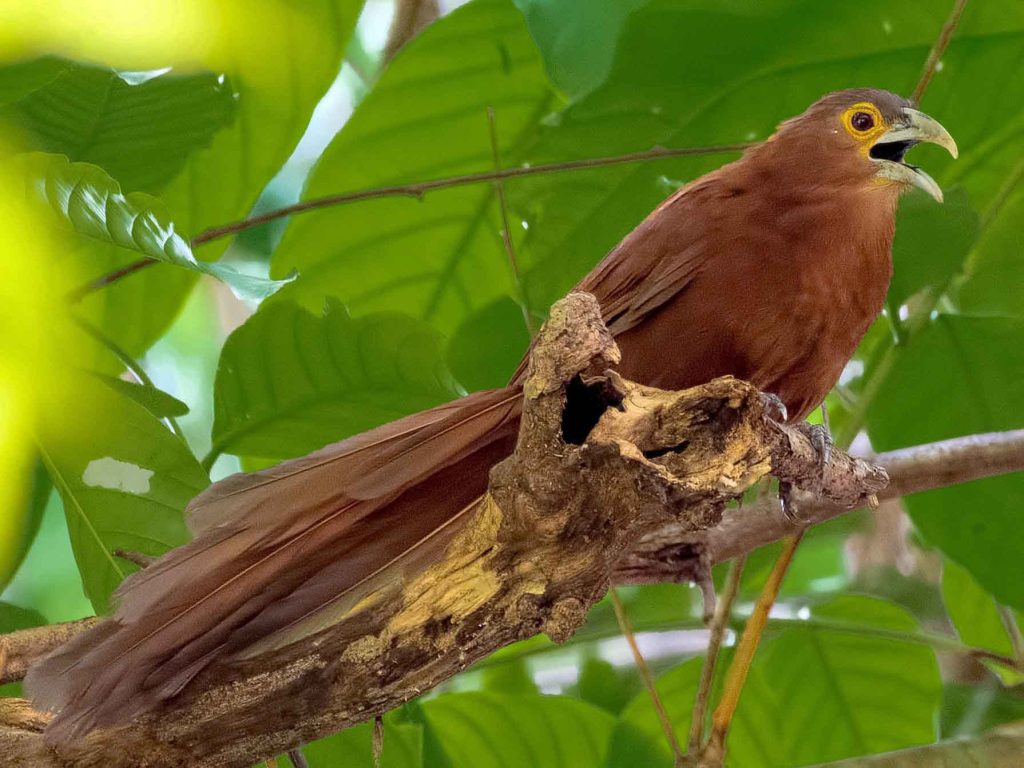
Source: ebird.org
The Rufous Coucal is a species of cuckoo found in the family Cuculidae. It is native to the Philippines and is found mainly on the island of Luzon and some nearby islands. This species of bird is adapted to living in subtropical or tropical moist lowland forests.
Unfortunately, this species of bird is threatened due to habitat loss, which is caused by the destruction of its natural habitat. This is an unfortunate situation, as the Rufous Coucal plays an important role in the ecosystem of the Philippines.
It is an important part of the food chain, and its loss could affect the delicate balance of the ecosystem. Therefore, it is important to protect its habitat to ensure that the Rufous Coucal can continue to thrive in its natural habitat.
| Kingdom | Animalia |
| Phylum | Chordata |
| Class | Aves |
| Order | Cuculiformes |
| Family | Cuculidae |
| Genus | Centropus |
| Species | C. unirufus |
11. Spotted Imperial Pigeon
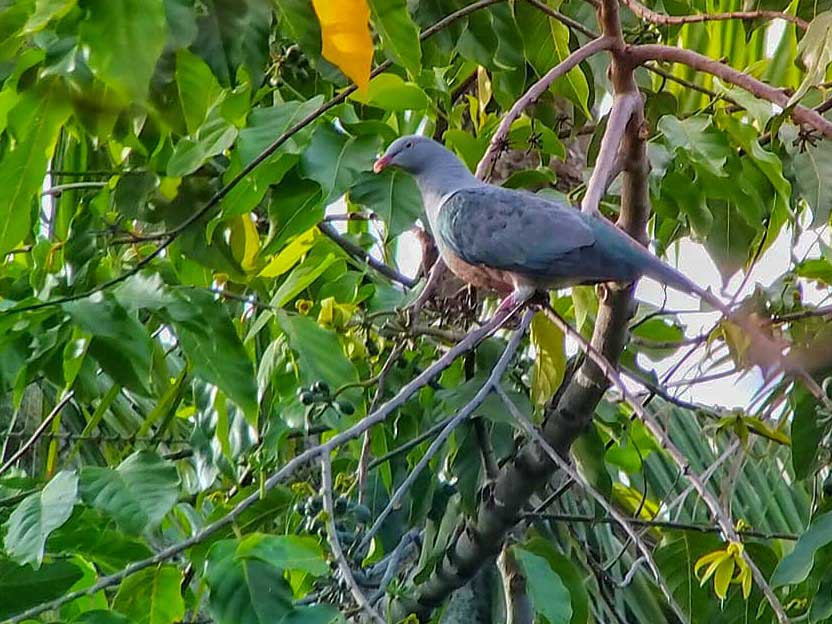
Source: ebird.org
The spotted imperial pigeon is a species of bird that is found only in the Philippines. It lives in forests and forest edges, but may sometimes venture down to the limestone shorelines. This is believed to be done in order to find food sources.
Unfortunately, this species is currently considered vulnerable due to threats posed by both habitat loss and hunting.
This means that the population of the spotted imperial pigeon is decreasing, and that conservation efforts are necessary in order to protect the species and ensure its survival.
Without proper protection, the spotted imperial pigeon could become endangered or even extinct in the future..
| Kingdom | Animalia |
| Phylum | Chordata |
| Class | Aves |
| Order | Columbiformes |
| Family | Columbidae |
| Genus | Ducula |
| Species | D. carola |
12. Greater Painted-Snipe
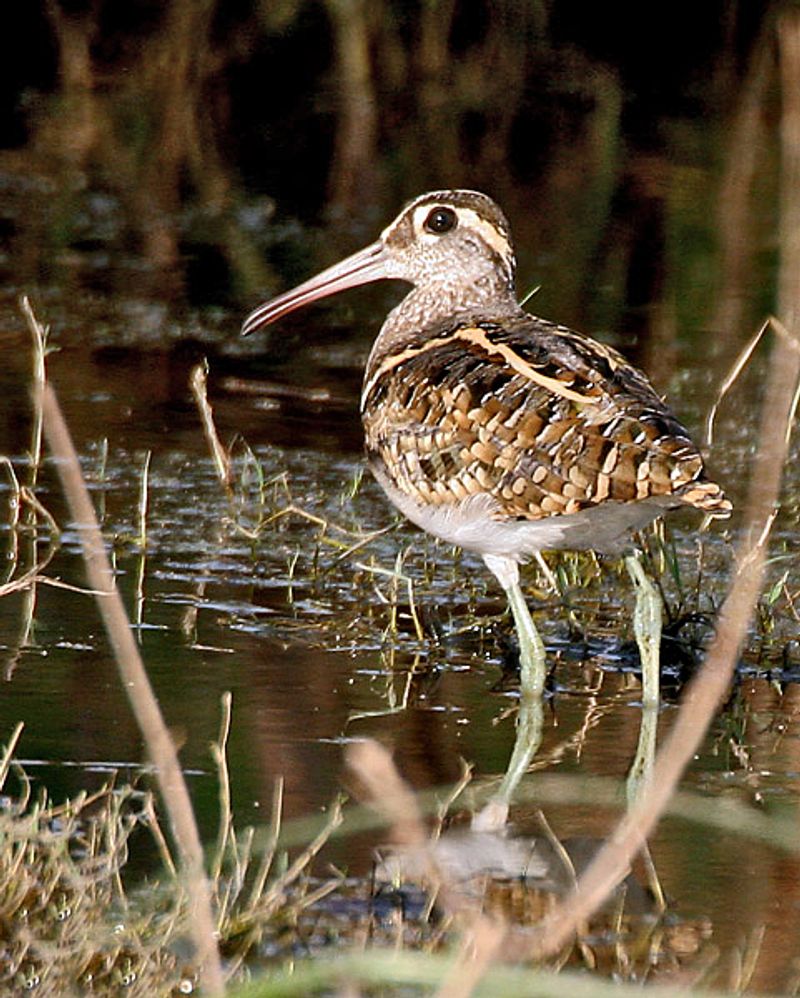
The greater painted snipe is an interesting species of wader found in many places around the world. It belongs to the family Rostratulidae and is typically found in marshy environments in Africa, South Asia, and Southeast Asia.
This bird is quite a large species, with a wingspan of up to 65 cm and a body length of around 34 cm. Its plumage is quite unique and striking, with a combination of grey, brown, black and white.
Its head is typically grey and brown and its wings have a wide black band that runs across them. The greater painted-snipe is an omnivorous species, meaning it eats both plants and animals.
It typically feeds on small invertebrates like insects, mollusks, worms, and crustaceans, as well as small fish. It also consumes many types of plants, including grasses, seeds, and shoots.
The greater painted snipe is an excellent flier and can often be seen hovering above the water in search of food. The greater painted snipe is typically found in marshy areas with plenty of vegetation.
It is often seen in small groups and is known for its loud, distinctive calls. The greater painted snipe is a solitary nester, typically laying its eggs on the ground in a shallow depression. The female will incubate the eggs for around three weeks before they hatch.
The greater painted snipe is an interesting species of wader that can be found in many places around the world. It is an omnivorous species that feeds on both plants and animals and is an excellent flier.
It is typically found in marshy areas and is known for its distinctive calls. The greater painted snipe is an important species to many ecosystems and its conservation status should be taken seriously.
| Kingdom | Animalia |
| Phylum | Chordata |
| Class | Aves |
| Order | Charadriiformes |
| Family | Rostratulidae |
| Genus | Rostratula |
| Species | R. benghalensis |
13. Lesser Frigatebird
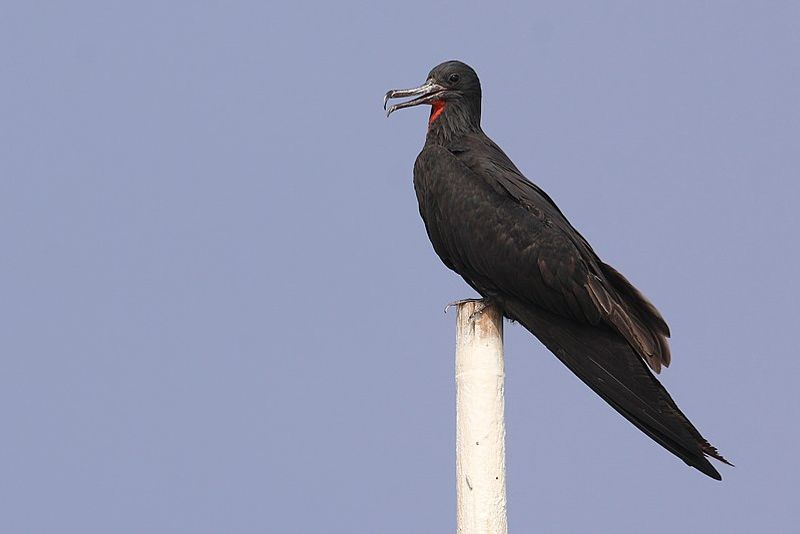
The lesser frigatebird is a species of seabird belonging to the Fregatidae family, commonly known as frigatebirds. It is the smallest species of frigatebird, measuring about 75 cm in length.
This species can be found across tropical and subtropical waters of the Indian and Pacific Oceans, as well as off the Atlantic coast of Brazil.The lesser frigatebird has a long, pointed beak, and its wings are long and pointed, allowing it to soar and glide with ease.
Its slim body and long wingspan make it an impressive sight in the sky. Its feathers are black, grey and white, and its tail is forked. Males have a red eye patch, which is larger and more conspicuous than that of females.
The lesser frigatebird is a great traveler, often traveling great distances in search of food and water. It feeds mainly on fish, squid and a variety of other marine creatures.
It also engages in opportunistic feeding, stealing food from other seabirds or scavenging from boats and wharves. The lesser frigatebird is listed as Least Concern by the International Union for Conservation of Nature (IUCN).
It is a relatively abundant species, with an estimated global population of around 500,000 to 1 million individuals. Its population is considered stable and is not currently facing any major threats.
| Kingdom | Animalia |
| Phylum | Chordata |
| Class | Aves |
| Order | Suliformes |
| Family | Fregatidae |
| Genus | Fregata |
| Species | F. ariel |
14. Wandering Whistling Duck
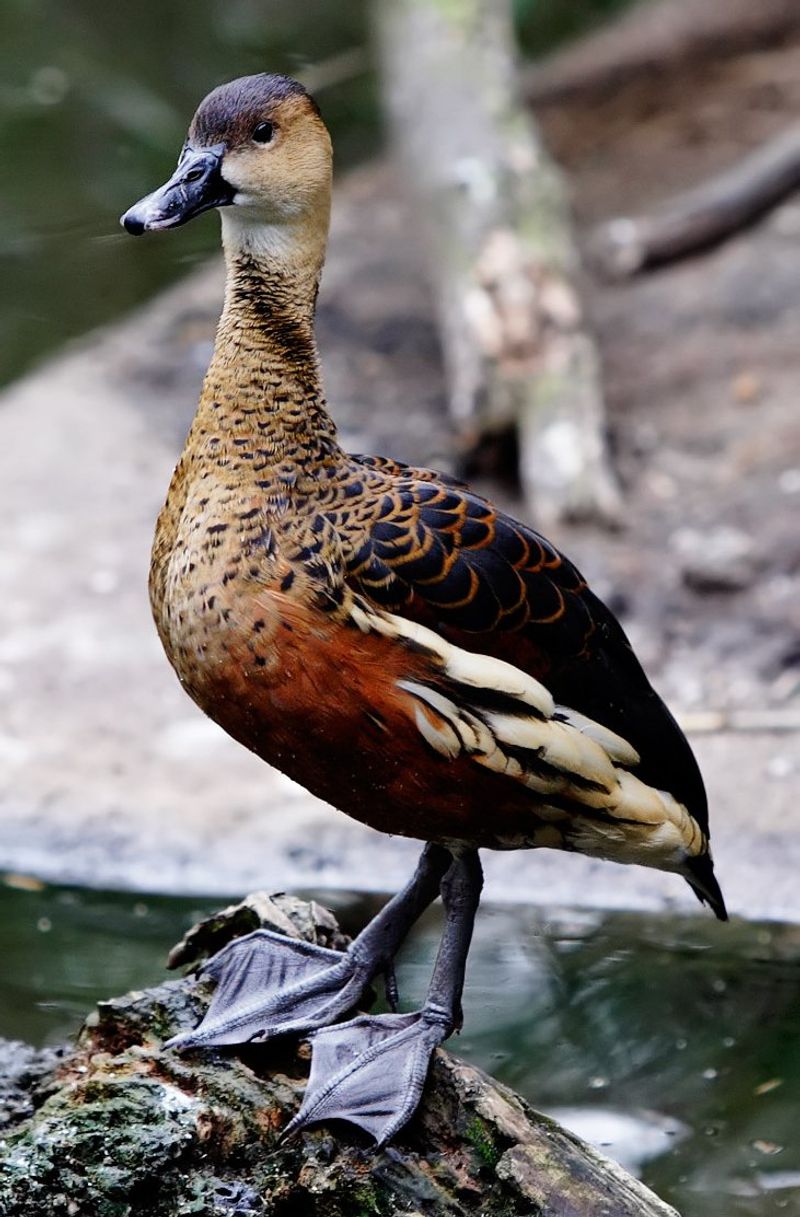
The Wandering Whistling Duck is a species of duck that inhabits a range of tropical and subtropical regions throughout Australia, the Philippines, Borneo, Indonesia, Papua New Guinea, and the Pacific Islands.
This species of duck is distinguished by its distinctive whistling call, which is usually heard at dawn and dusk.
Unlike other species of duck, the Wandering Whistling Duck is not migratory and has a strong preference for open wetlands, such as flooded grasslands, marshes, and rivers.
As its name implies, the Wandering Whistling Duck is also highly mobile and is known to travel up to hundreds of kilometers in search of food and suitable habitats.
The Wandering Whistling Duck is a medium-sized duck, with a total length of approximately 56 cm, and a wingspan of up to 80 cm.
The plumage of the male and female of this species is fairly similar, being a mottled brown or grey on the upperparts, and a paler brown or grey on the underparts. Both sexes have a white neck patch, and a black stripe running from the eye to the bill.
The bill is short and orange in color. The legs and feet are pink in color. The diet of the Wandering Whistling Duck consists of a variety of aquatic plants, as well as insects, mollusks, and other invertebrates.
They forage in shallow waters and often form small groups while searching for food. Breeding usually occurs in the dry season, and the female lays a clutch of up to 12 eggs in a nest made from marsh vegetation and lined with down.
Both parents incubate the eggs for around 25 days, and the chicks fledge after about 45 days. The Wandering Whistling Duck is listed as Least Concern on the IUCN Red List.
Although this species is not globally threatened, it is facing local population declines in some areas due to habitat loss and hunting.
For this reason, it is important to protect their habitats and to strictly enforce hunting regulations in order to ensure that this species remains abundant for generations to come.
| Kingdom | Animalia |
| Phylum | Chordata |
| Class | Aves |
| Order | Anseriformes |
| Family | Anatidae |
| Genus | Dendrocygna |
| Species | D. arcuata |
15. Philippine Hawk-Cuckoo
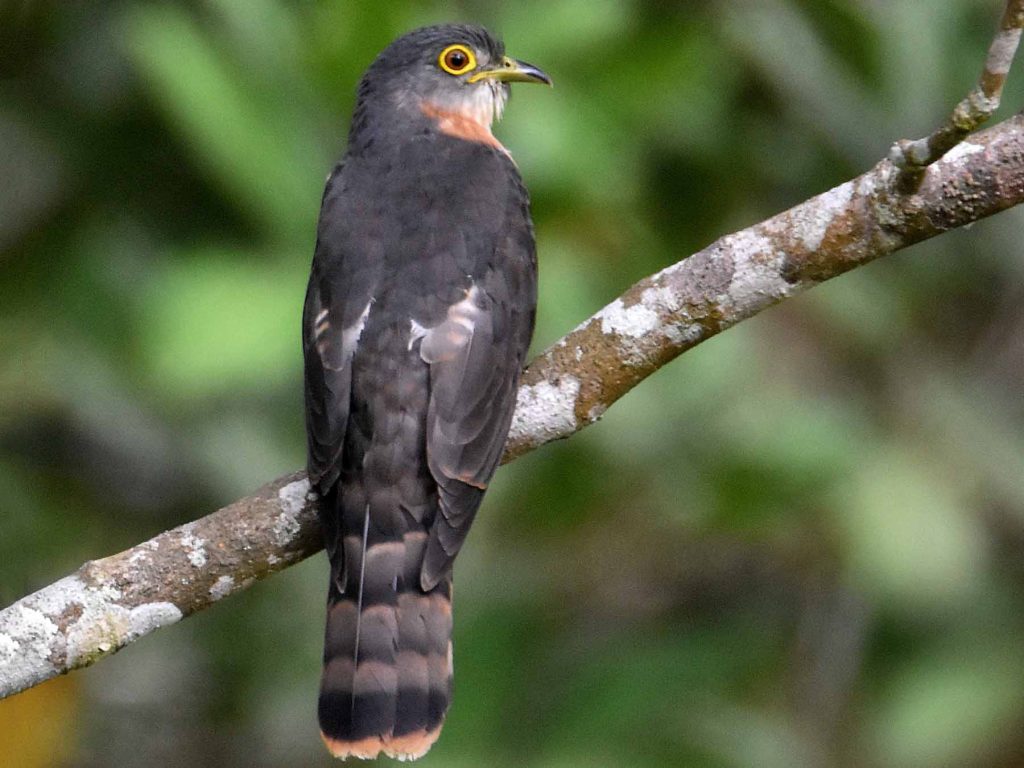
Source: ebird.org
The Philippine hawk-cuckoo is a species of bird that belongs to the cuckoo family. It is endemic to the Philippines, meaning that it is found nowhere else in the world.
This species was previously classified as a subspecies of Hodgson’s hawk-cuckoo, however, it has now been reclassified as a separate species based on differences in its vocalizations.
The Philippine hawk-cuckoo is known for its loud, monotonous mating call, which distinguishes it from its close relative. This species is typically found in forested areas, often near streams, and feeds on insects, small lizards, and fruit.
It is a small bird, with a length of around 20 cm (8 inches), and has a predominantly brown plumage with darker streaks and white patches on its wings. It is considered to be of least concern on the IUCN Red List.
| Kingdom | Animalia |
| Phylum | Chordata |
| Class | Aves |
| Order | Cuculiformes |
| Family | Cuculidae |
| Genus | Hierococcyx |
| Species | H. pectoralis |
16. Pied Imperial Pigeon
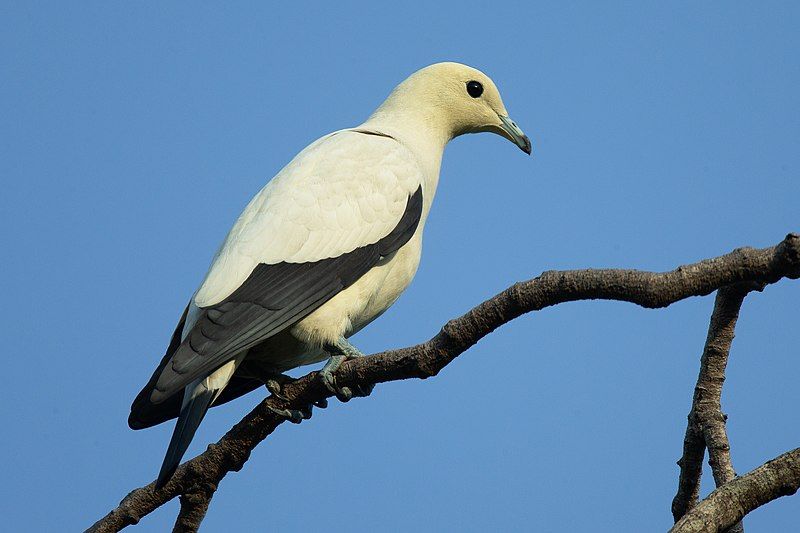
The pied imperial pigeon is an impressive species of pigeon found in Southeast Asia. Its name comes from the bird’s distinct coloring, which is mostly white with black patches, earning it the nickname “pied”.
This species of pigeon is relatively large compared to other types of pigeons and is native to countries such as Myanmar, Thailand, Indonesia, the Philippines, and the Bird’s Head Peninsula in New Guinea. The pied imperial pigeon can be found in a variety of habitats including dense forests, woodlands, mangroves, plantations, and scrublands.
In these environments, the pigeon is able to find food, shelter, and safety from potential predators. Its diet consists mostly of fruits, berries, and seeds found on the ground and in trees.
The pigeon is also known to occasionally feed on small insects and worms. The pied imperial pigeon is a social bird and is often seen in large flocks flying together. Males and females are quite similar in appearance, although the males tend to have slightly brighter plumage.
During mating season, the males perform an elaborate courtship ritual, which includes cooing and displaying their colorful feathers. The pied imperial pigeon is a species of least concern according to the International Union for Conservation of Nature.
However, its population is still in decline due to the destruction of its natural habitat and hunting. As such, it is important to protect these beautiful birds and their habitats, so that they can continue to thrive.
| Kingdom | Animalia |
| Phylum | Chordata |
| Class | Aves |
| Order | Columbiformes |
| Family | Columbidae |
| Genus | Ducula |
| Species | D. bicolor |
Conclusion
Birds in Zambales are a beautiful and diverse part of the local wildlife. They are an important part of the environment that helps to maintain the delicate balance between land and sea.
There are many varieties of bird species in Zambales, from the majestic Philippine Eagle to the colorful endemic species of the mountains.
Bird watching is a popular activity in Zambales for both locals and visitors alike, as it provides an opportunity to observe and appreciate some of the most beautiful birds in the world.
Despite their beauty, many of these birds are facing threats from deforestation and development, and it is important that we take steps to protect them and their habitats.